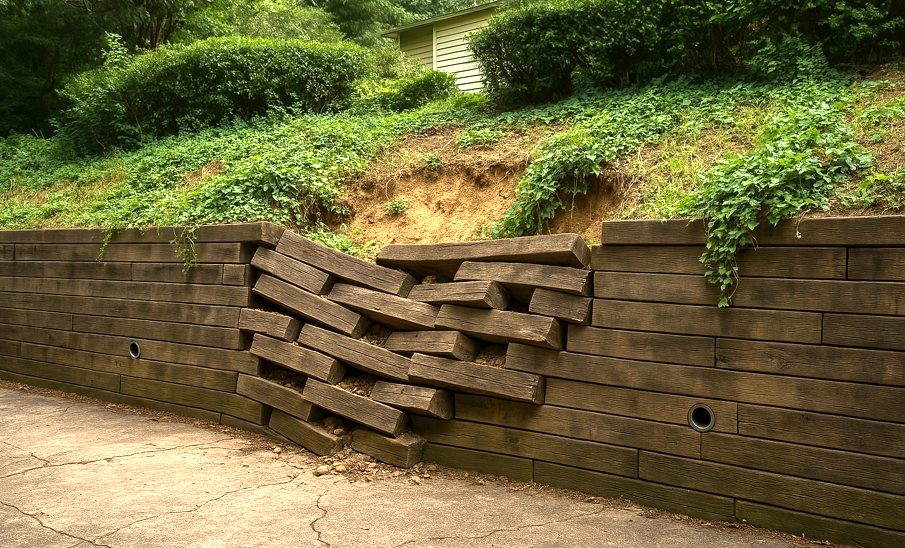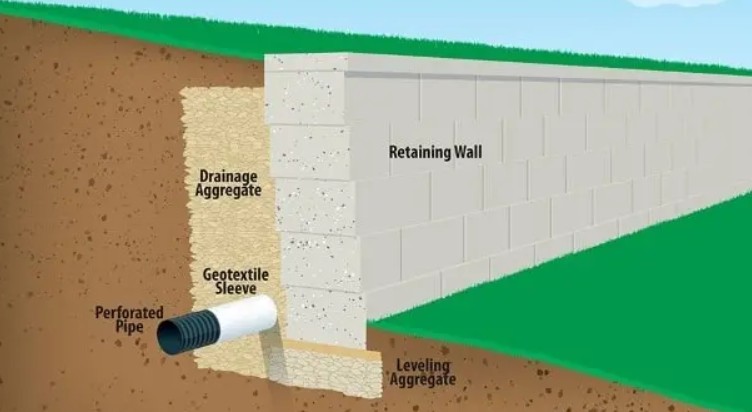Massachusetts Home Inspections YOUR INVESTMENT IS MY CONCERN

Retaining Walls

Retaining walls can be constructed from a variety of materials, including landscape stone, fieldstone, ledge rock, brick, poured concrete, concrete blocks, and even railroad ties. These structures are typically designed to support soil on steep or vertical slopes, helping to prevent the land—and potentially your home—from shifting or sliding downhill.
In addition to stabilizing terrain, retaining walls often serve to address drainage and erosion concerns. Regardless of their specific function, retaining walls represent a significant investment and require regular care to ensure their long-term performance and safety. It’s important to periodically inspect your retaining wall for signs of damage such as shifting, displacement, bulging, leaning, or loose materials. If you discover any loose components or cavities that could lead to structural failure, it’s highly recommended that you or a qualified contractor address these issues promptly. Delaying repairs can result in further deterioration and substantially higher costs down the line.

If your property features timber retaining walls—such as those made from railroad ties (as pictured above)—it’s important to inspect them regularly for signs of internal damage. Over time, Carpenter Ants and Termites can infest these wooden structures, hollowing them out and significantly weakening their integrity. To check for potential issues, periodically probe the wood for soft or hollow areas, especially if the wall has been in place for several years. If an infestation is detected or suspected, the affected sections may need to be replaced.
If you're planning to replace a wood retaining wall, consider upgrading to more durable materials such as landscape stone, poured concrete or other masonry options. These alternatives offer greater longevity, enhanced structural integrity, and typically require less maintenance over time compared to wood. Remember, a retaining wall lacking proper drainage can result in significant and costly repairs down the line.
Drainage and Erosion Protection for Retaining Walls
Ensure that the lower footings of your retaining wall are well protected from erosion, as this can significantly compromise the structure's integrity. One critical feature to check for is the presence of weep holes—small, exposed openings located at the lower outside portion of the wall. These holes typically contain pipes that penetrate through the wall, allowing water to drain from the soil behind it.
Drainage from behind a wall is essential in preventing water buildup, which can lead to pressure, shifting, and long-term damage to a retaining wall. For larger retaining walls, weep holes are commonly 4 inches in diameter to ensure sufficient drainage. Proper spacing between them allows for even water flow across the wall’s base. In certain situations, perforated drainage pipes, typically encased in geotextile fabric or placed in a gravel filter bed, are used to direct water from deeper sections of the backfill to the weep holes. However, not all retaining walls include weep holes. Some retaining walls have perforated piping placed within the aggregate, which channel water around the structure.

If your retaining wall is solid and no weep holes are visible, I strongly recommend consulting a professional landscaper to confirm that your retaining wall has integrated drainage. The absence of proper drainage can result in serious issues, such as heaving, displacement, or leaning of the wall over time due to water retention. During our freezing winter months, the water that gets trapped behind the wall can freeze as temperatures drop. When water freezes, it expands, which can further increase pressure on the wall and lead to cracking or shifting of the wall structure. Conveying water from behind any retaining wall is crucial.
SEE MY CLIENTS FAILED RETAINING WALLS ON GOOGLE PHOTOS
Here is what my clients have to say about my home inspection services:
Press F5 (on your keyboard) for additional testimonials
Buying a home is arguably the most important, exciting and nerve-wracking purchase a person will ever make. This is the reason you need a great home inspector, and Dave Valley is just that. He is empathetic – he understands and appreciates the various emotions a potential home-buyer goes through. Most importantly, Dave provides you with objective information so you can make the most informed decision possible.
It was a pleasure working with Dave – he contains all the qualities that make a great home inspector – he is the consummate professional, prompt, courteous, meticulous in his detail and honest. Dave was reasonably priced – in fact Dave charged me the same amount I spent 10 years earlier on a smaller house and provided a far better work product.
Prompt
I arrived at the house at the agreed upon time on a cold and nasty day, and found Dave outside inspecting the exterior of the home. He was already a half hour into his inspection – I think this exemplifies and is symbolic of the fact that Dave is respectful of his client’s time.
Courteous
Dave was pleasant to deal with, personable and thoughtful not only to his client but also to the buyer’s real estate agent.
Detail-oriented
Dave spent almost four hours in his investigation of a 2,000 square foot house. He answered all my questions and reviewed every observation he had with me. David provided a detailed report, and encouraged me to call and email him to discuss the report and to ask questions.
Conclusion
The highest compliment I can give Dave is to say that I would use him again and will encourage and recommend him to others.
Michael S. Giaimo















